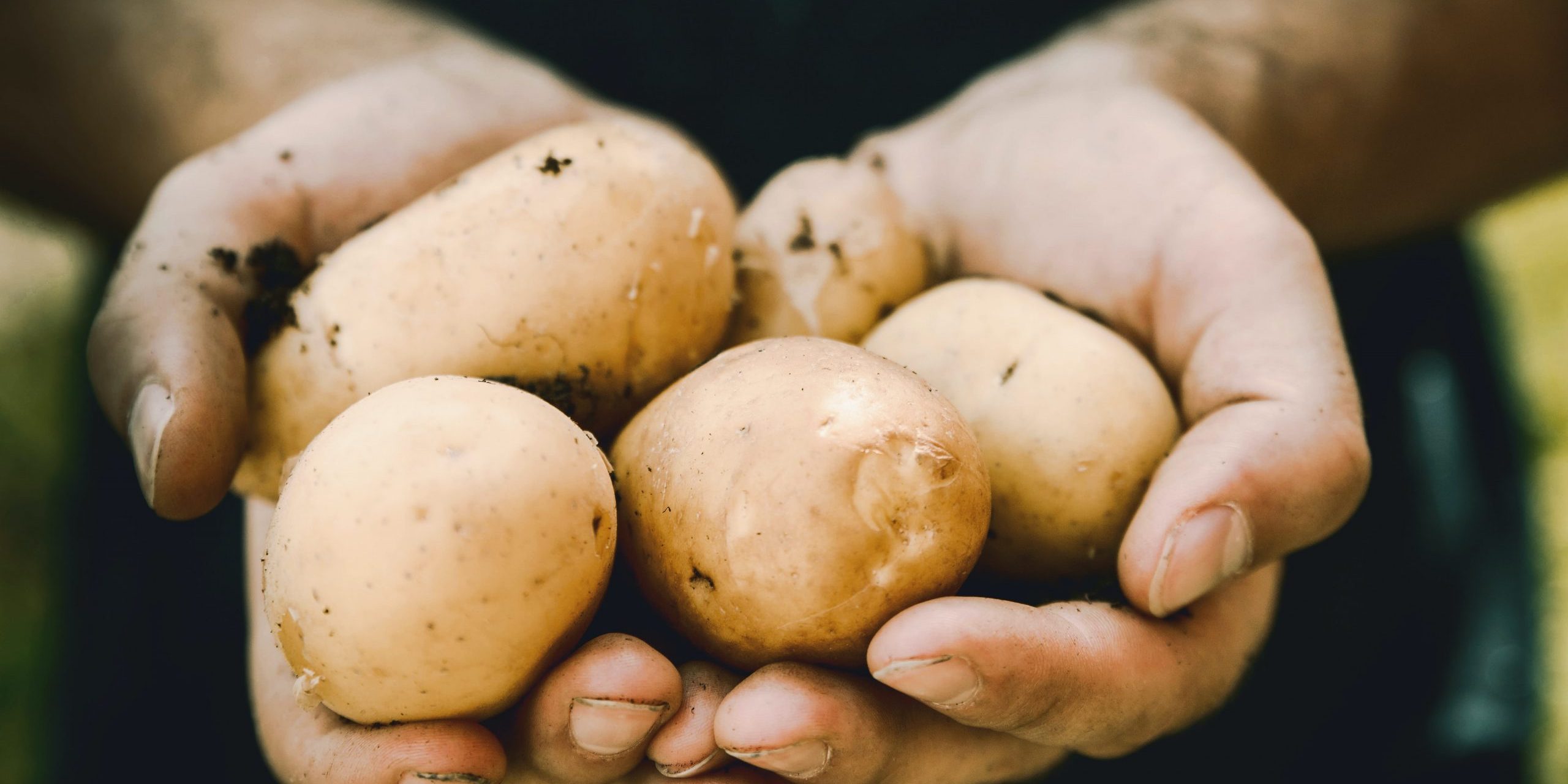HOW TO PLANT A POTATO SEED
A+ Garden center offers several of the tastiest fingerling, traditional baking and red potato varieties.
This half hardy vegetable is a culinary staple and yet is overlooked by many backyard gardeners. The taste and texture of home-grown potatoes are far superior to store bought, especially the early varieties. They need a cool climate, and also need to be watched to prevent sunburn.
Planting
Plant seed potatoes (pieces of whole potato or a small whole potato, with at least two eyes per piece) up to two weeks after last spring frost. You may start planting earlier, as soon as soil can be worked, but be aware that some crops will be ruined by a frost. If you are cutting up potato pieces for planting, do so one or two days ahead of time. This will give them the chance to form a protective layer, both for moisture retention and rot resistance.
Dig a trench, four inches deep. Spread and mix in rotted manure or organic compost in the bottom of the trench before planting. Plant seed potatoes one foot apart, eye side up. Practice yearly crop rotation.
Alternatively, potatoes can be grown without digging. Laid on a bed of soil, mulch or cardboard, or within a garbage can or fenced ring, seed potatoes covered with deep mulch will sprout and grow up. As they grow, continue to add loose soil or mulch to cover (like traditional hilling, described below). Harvesting potatoes from this loose material can be quite easy. Search “No dig potatoes” online for more ideas.
Care
Potatoes thrive in well-drained, loose soil. Potatoes need consistent moisture, so water regularly when tubers start to form.
Hilling should be done before the potato plants bloom, when the plant is about six inches tall. Hoe more dirt up around the base of the plant in order to cover the root as well as to support the plant. The idea is to keep the potato from getting sunburned, in which case they turn green and will taste bitter. You will need to hill potatoes every couple of weeks to protect your crop.
Pests
Aphids
Flea Beetles
Leaf Hoppers
Early/Late Blight
Potato Scab: Most likely cause by soil with high pH. Remember: Potatoes like acidic soil (do not plant in soil with a pH higher than 5.2). Dust seed potatoes with sulfur before planting.
Harvest/Storage
Dig potatoes on a dry day. Dig up gently, being careful not to puncture the tubers. The soil should not be compact, so digging should be easy.
New potatoes will be ready for harvest after 10 weeks, usually in early July.
You should harvest all of your potatoes once the vines die (usually by late August), or the potatoes may rot.
Make sure you brush off any soil clinging to the potatoes, then store them in a cool, dry, dark place. The ideal temperature for storage is 35 to 40°F.
Do not store potatoes with apples; their ethylene gas will cause potatoes to spoil.
Whether you dig your own potatoes or buy them at a store, don’t wash them until right before you use them. Washing potatoes shortens their storage life.
http://www.almanac.com/plant/potatoes
[/vc_column_text][/vc_column][/vc_row]







